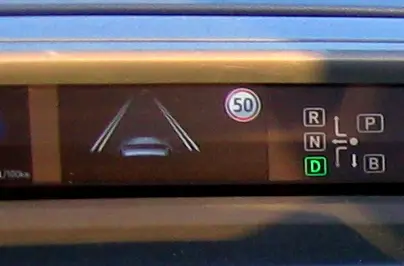How does a car’s traffic sign recognition system work?


How does a car’s traffic sign recognition system work?
Car technology has come a long way in recent years, with advancements in safety features and driver assistance systems. One such system that has gained popularity is the traffic sign recognition system. This technology uses artificial intelligence and machine learning to identify and interpret traffic signs, providing valuable information to the driver. In this article, we will delve into the workings of a car’s traffic sign recognition system, exploring the technology behind it and its impact on automotive engineering and safety.
Understanding Traffic Sign Recognition System
The traffic sign recognition system is designed to assist drivers by recognizing and interpreting traffic signs, including speed limits, stop signs, no entry signs, and more. By using a combination of cameras, sensors, and advanced algorithms, the system can detect and analyze the information displayed on these signs.
Camera and Sensor Integration
The heart of the traffic sign recognition system lies in the integration of cameras and sensors. Typically, a forward-facing camera is mounted on the windshield or the front grille of the car. This camera captures real-time images of the road ahead, including any traffic signs that come into view.
In addition to the camera, the system may also utilize other sensors such as radar or lidar. These sensors provide additional data about the surroundings, helping to enhance the accuracy of the system.
Artificial Intelligence and Machine Learning
Once the camera captures an image of a traffic sign, the system uses artificial intelligence and machine learning algorithms to analyze and interpret the information. These algorithms are trained on vast datasets of traffic signs, allowing them to recognize patterns and make accurate predictions.
The machine learning aspect of the system enables it to continuously improve its performance over time. As more data is collected and analyzed, the algorithms can adapt and refine their recognition capabilities, ensuring better accuracy and reliability.
The Process of Traffic Sign Recognition
Now that we understand the technology behind the traffic sign recognition system, let’s explore the step-by-step process of how it works:
Image Capture
The first step is the capture of the image by the camera. As the car moves along the road, the camera continuously captures images of the surroundings, including any traffic signs that come into view.
Image Processing
Once the image is captured, it undergoes a series of processing steps. These steps involve enhancing the image quality, removing any noise or distortion, and isolating the traffic sign from the rest of the scene.
Feature Extraction
After the image is processed, the system extracts relevant features from the traffic sign. These features may include shape, color, text, symbols, or any other distinctive characteristics that help identify the sign.
Pattern Recognition
Using the extracted features, the system compares them to the patterns it has learned from the training data. By matching the features to known patterns, the system can determine the type of traffic sign and the information it conveys.
Driver Alert
Once the traffic sign is recognized, the system alerts the driver by displaying the relevant information on the car’s dashboard or heads-up display. This allows the driver to stay informed about speed limits, road conditions, and other important information without having to divert their attention from the road.
Impact on Automotive Engineering and Safety
The traffic sign recognition system has had a significant impact on automotive engineering and safety. Here are some key benefits:
- Improved Safety: By providing real-time information about traffic signs, the system helps drivers stay aware of speed limits, no entry signs, and other important regulations. This reduces the risk of accidents and improves overall road safety.
- Driver Assistance: The system acts as a valuable assistant to the driver, providing timely reminders and alerts. This can be particularly useful in unfamiliar areas or during long drives when fatigue may set in.
- Efficient Navigation: With accurate information about speed limits and road conditions, drivers can plan their routes more efficiently, avoiding unnecessary delays or violations.
- Reduced Human Error: Traffic sign recognition reduces the reliance on human observation and interpretation, minimizing the chances of human error or oversight.
Conclusion
In conclusion, a car’s traffic sign recognition system is a sophisticated technology that uses artificial intelligence and machine learning to identify and interpret traffic signs. By integrating cameras, sensors, and advanced algorithms, the system enhances driver safety, provides valuable assistance, and improves overall road efficiency. As automotive engineering continues to evolve, we can expect further advancements in this technology, making our roads safer and more efficient for everyone.
Recent Posts
How do I create an engaging and informative online quiz or assessment?
Creating an engaging and informative online quiz or assessment can be a powerful tool for… Read More
What are the most effective methods for managing and reducing work-related stress in the hospitality industry?
Work-related stress is a common issue in the hospitality industry, where employees often face long… Read More
How can I improve my assertiveness and communication skills in a leadership position?
In a leadership position, assertiveness and effective communication skills are crucial for success. Being able… Read More
What are the key elements of a successful employee recognition and rewards program?
Employee recognition and rewards programs play a crucial role in motivating and engaging employees, as… Read More
How do I effectively manage and respond to customer feedback and reviews?
Customer feedback and online reviews play a crucial role in shaping a company's reputation and… Read More
What are the best strategies for effective time management as a stay-at-home parent?
Effective time management is crucial for stay-at-home parents who juggle multiple responsibilities on a daily… Read More